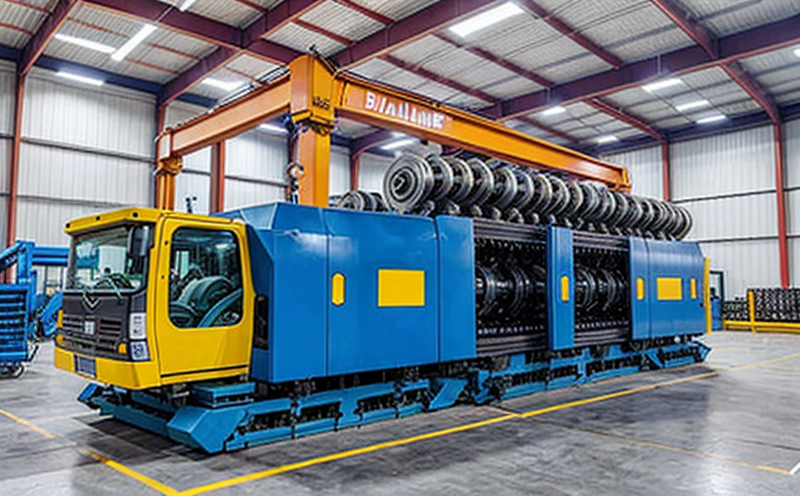Role of dynamic balancing in improving machine lifespan
The Unseen Hero of Industry How Dynamic Balancing Extends Machine Lifespan and Boosts Business Efficiency
In the fast-paced world of manufacturing and industry, machinery is the backbone that drives productivity and profitability. However, even with regular maintenance, equipment failures can still occur, resulting in costly downtime, lost revenue, and compromised product quality. This is where dynamic balancing comes into play a laboratory service provided by Eurolab that has revolutionized the way industries approach machine maintenance.
Dynamic balancing is an advanced technique used to restore balance to rotating machines and their components, ensuring optimal performance, efficiency, and longevity. By detecting even the slightest deviations in balance, our expert technicians can rectify issues before they escalate into major problems. In this article, well delve into the significance of dynamic balancing in extending machine lifespan, its numerous benefits, and why its an essential service for businesses seeking to minimize downtime and maximize profits.
The Advantages of Dynamic Balancing A Comprehensive Breakdown
Eurolabs dynamic balancing services offer a multitude of advantages that can transform your business operations. Here are some of the key benefits
Increased Machine Lifespan By identifying and correcting balance issues, dynamic balancing extends the lifespan of machines and their components, reducing the need for premature replacements.
Improved Efficiency Balanced machinery operates at optimal levels, resulting in increased productivity, faster production times, and reduced energy consumption.
Enhanced Product Quality Dynamic balancing ensures that rotating parts function smoothly, minimizing vibrations that can affect product quality and consistency.
Reduced Maintenance Costs By preventing equipment failures and extending machine lifespan, businesses can save on costly repairs, replacements, and maintenance.
Increased Safety Well-balanced machinery reduces the risk of accidents and injuries associated with unbalanced or malfunctioning equipment.
Compliance with Industry Regulations Dynamic balancing ensures that machines meet industry standards and regulations, minimizing the risk of non-compliance fines and reputational damage.
The Science Behind Dynamic Balancing
Dynamic balancing is based on the fundamental principle that all rotating parts should rotate at their optimal speed without generating excessive vibrations. When a machine or component becomes imbalanced, it creates uneven stress on bearings, shafts, and other critical components, leading to premature wear and tear.
Our expert technicians use advanced equipment and techniques to detect balance deviations, identify the root cause of issues, and apply corrective measures to restore perfect balance. This involves
Vibration Analysis Using specialized sensors and software, we measure vibration levels and frequencies to pinpoint areas where balance is compromised.
Balancing Techniques Our technicians employ various balancing techniques, including static balancing, dynamic balancing, and precision balancing, depending on the specific application.
Component Replacement If necessary, we replace worn-out or damaged components with high-quality, precision-engineered parts to ensure optimal performance.
Real-World Applications Industries Where Dynamic Balancing Makes a Significant Impact
Eurolabs dynamic balancing services cater to various industries where machine balance is crucial for efficiency and productivity. Some of the key sectors include
Aerospace Turbines, gearboxes, and other critical components require precise balancing to ensure safe operation at high speeds.
Automotive Engine and transmission components must be balanced to optimize performance, reduce emissions, and comply with regulatory standards.
Energy Power generation equipment, such as turbines and generators, demand precise balancing to maximize efficiency and minimize downtime.
Industrial Equipment Centrifuges, pumps, and other industrial machinery rely on dynamic balancing to maintain optimal performance and extend lifespan.
Frequently Asked Questions Get Your Dynamic Balancing Queries Answered
Weve compiled a comprehensive QA section to address your queries about dynamic balancing
Q What is the difference between static balancing and dynamic balancing?
A Static balancing involves measuring and correcting balance at rest, while dynamic balancing measures and corrects balance in motion.
Q How often should I have my machinery dynamically balanced?
A Regular checks (every 6-12 months) are recommended for high-speed or critical equipment. Our experts can provide customized recommendations based on your specific needs.
Q Can dynamic balancing be performed on-site, or do I need to send the machine to Eurolabs laboratory?
A Both options are available. We offer on-site services for convenience and minimize downtime. However, if more extensive analysis is required, well transport the equipment to our state-of-the-art laboratory.
Q How long does dynamic balancing take?
A The duration depends on the complexity of the task and the type of machinery involved. Our expert technicians work efficiently to complete the process in a timely manner, ensuring minimal disruption to your operations.
Conclusion Unlock the Full Potential of Your Machinery with Eurolabs Dynamic Balancing Services
In todays competitive business landscape, machine efficiency and longevity are critical factors that can make or break your bottom line. By entrusting Eurolab with dynamic balancing services, youll experience numerous benefits, including increased lifespan, improved efficiency, enhanced product quality, reduced maintenance costs, and increased safety.
Dont let balance issues compromise your productivity and profitability any longer. Contact us today to schedule a dynamic balancing service and discover the transformative power of precision balancing for yourself.




